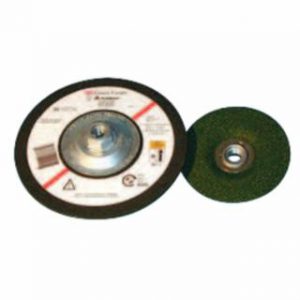No products in the cart.
Return To ShopSample Preparation – Grinding and polishing explained
In order to take proper measurements on a specimen that is being tested, such as a piece of material for a hardness test, proper sample preparation is a key step in order to get accurate data from the test. In sample preparation, you usually have the following steps: sectioning, mounting, coarse grinding, fine grinding, polishing, etching and examination. We are going to explain the grinding and polishing steps in sample preparation.
Sample Preparation – Grinding and polishing explained.
Grinding
Grinding removes saw marks and levels and cleans the specimen surface. The goal at the end of grinding is to have a surface with minimal damage in which the remaining artifacts that keep the surface from being nice and smooth can be removed during polishing in the shortest possible time. In order to achieve this, the process of grinding uses fixed abrasive particles that produce chips of the specimen material. Aluminum oxide is most widely used in grinding wheels, followed by silicon carbide. Natural and artificial diamonds are used for important special applications. These abrasives are bonded to paper, polymeric or cloth backing materials in the form of grinding discs and grinding belts of various sizes. Limited use is made of standard grinding wheels with abrasives embedded in a bonding material.
Grinding is usually a two-step process. The first step in the grinding process is known as plane grinding. Plane grinding is the process of making the entire surface similar. For example, if the sample surface had several raised areas, plane grinding would flatten those areas to a similar condition as the rest of the surface.
The second step in the grinding process is known as fine grinding. The goal of fine grinding is to reduce damage and surface roughness of samples to a degree that is suitable for polishing. In order to achieve this, it is advisable to inspect the ground surface using a light microscope in order to ensure that all damage from the previous stage, whether that is a cutting or grinding stage, is completely removed. 3-4 papers of different fine grits of abrasives, whether used by grinding wheel, belt grinder, or another method, are needed for fine grinding. The choice of abrasive grits depends on the physical characteristics of the sample material.
Polishing
Polishing removes the artifacts of grinding while maintaining the integrity of the sample. The goal is to achieve a perfectly smooth, deformation free surface. Such a surface is necessary to observe the true microstructure for subsequent interpretation, testing, or analysis, both qualitative and quantitative. This is achieved with steps of successively finer abrasive particles. These abrasive particles are usually flaky powders of different fineness. A mixture of powder and water is spread over a rotating disc covered with polishing velvet cloth. The specimen is thoroughly washed after each stage of polishing in order to prevent contamination of the polishing cloth by powder particles from the previous stage.
Lapping
Lapping is another form of polishing, used to correct minor imperfections of shape and produce a perfectly smooth finish. Lapping differs from grinding because it uses a “loose” abrasive instead of bonded abrasives like grinding wheels. The loose abrasive rolls and move freely in all directions, hammering small particles out of the specimen surface using a lapping machine. Lapping machines consist of a rotating table, called a lapping plate, and three or four conditioning rings. Standard machines have lapping plates from 12 in. to 48 in. in diameter.
With softer samples, the loose abrasive grain can get embedded onto the sample, which is undesirable. That is why lapping is only used for the preparation of very hard, brittle materials, such as ceramics and mineralogical specimens.
Grinding and polishing are the last steps in sample preparation, and it is critical to get these steps correct. That is why there should be careful microscopic examination after each phase in order to achieve the perfect smooth surface the sample needs.
Metallurgical Supply Company (METSUCO) has been a leading supplier of polishing and grinding materials and consumables for over 30 years. We serve not only industries such as oil and gas, aerospace, automotive, and heavy manufacturing, but also universities and quality testing labs. Call 713-827-0700 or email sales@metsuco.com with inquiries.











